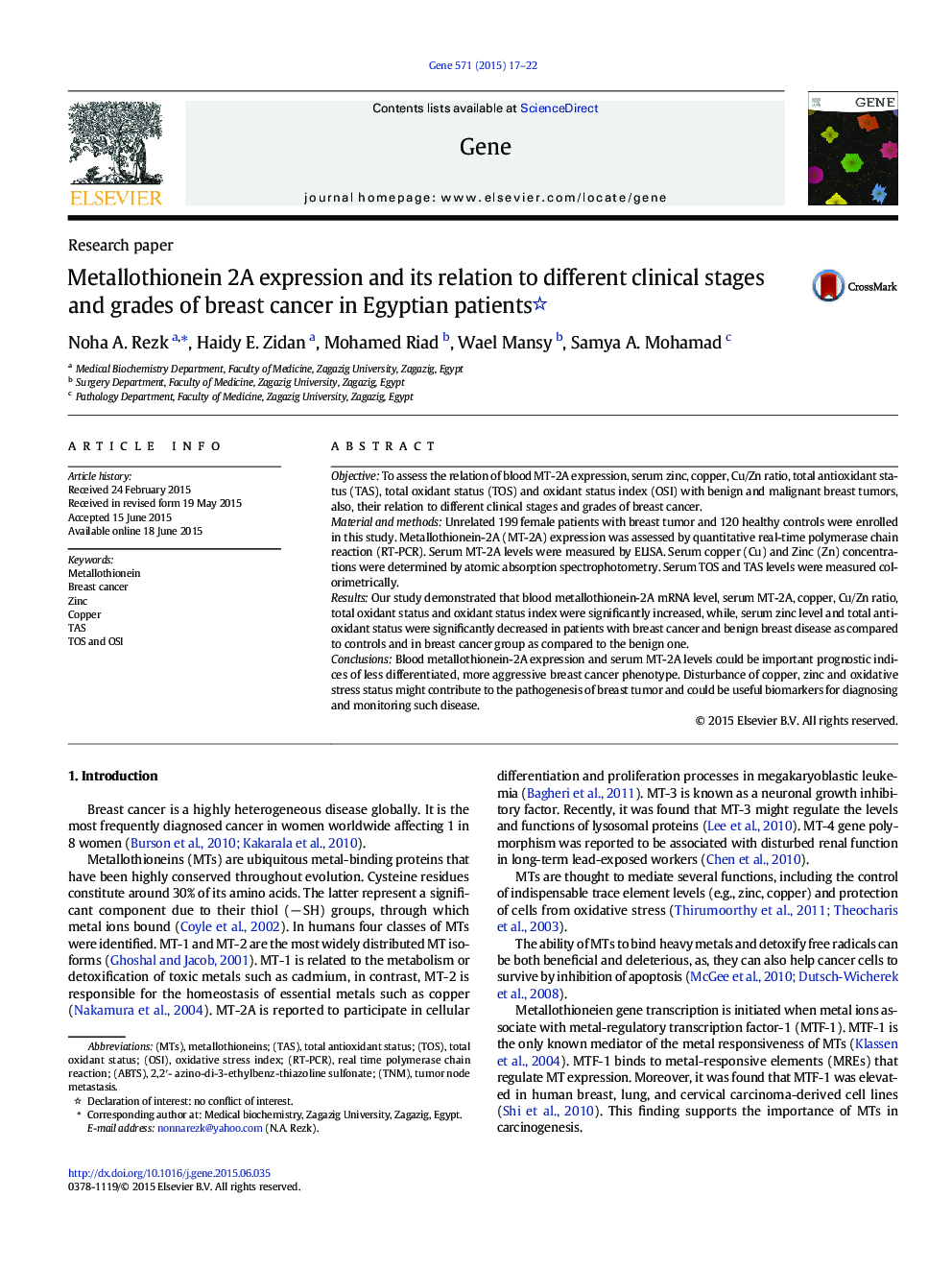| کد مقاله | کد نشریه | سال انتشار | مقاله انگلیسی | نسخه تمام متن |
|---|---|---|---|---|
| 2815323 | 1159865 | 2015 | 6 صفحه PDF | دانلود رایگان |

• Blood MT-2A mRNA and serum MT-2A were increased in breast tumors compared to controls.
• MT-2A expression and MT-2A levels were increased with successive grade of malignancy.
• Serum Cu and Cu/Zn ratio were increased in breast tumors compared to controls.
• OSI was significantly increased in poorly differentiated breast cancer.
ObjectiveTo assess the relation of blood MT-2A expression, serum zinc, copper, Cu/Zn ratio, total antioxidant status (TAS), total oxidant status (TOS) and oxidant status index (OSI) with benign and malignant breast tumors, also, their relation to different clinical stages and grades of breast cancer.Material and methodsUnrelated 199 female patients with breast tumor and 120 healthy controls were enrolled in this study. Metallothionein-2A (MT-2A) expression was assessed by quantitative real-time polymerase chain reaction (RT-PCR). Serum MT-2A levels were measured by ELISA. Serum copper (Cu) and Zinc (Zn) concentrations were determined by atomic absorption spectrophotometry. Serum TOS and TAS levels were measured colorimetrically.ResultsOur study demonstrated that blood metallothionein-2A mRNA level, serum MT-2A, copper, Cu/Zn ratio, total oxidant status and oxidant status index were significantly increased, while, serum zinc level and total antioxidant status were significantly decreased in patients with breast cancer and benign breast disease as compared to controls and in breast cancer group as compared to the benign one.ConclusionsBlood metallothionein-2A expression and serum MT-2A levels could be important prognostic indices of less differentiated, more aggressive breast cancer phenotype. Disturbance of copper, zinc and oxidative stress status might contribute to the pathogenesis of breast tumor and could be useful biomarkers for diagnosing and monitoring such disease.
Journal: Gene - Volume 571, Issue 1, 15 October 2015, Pages 17–22